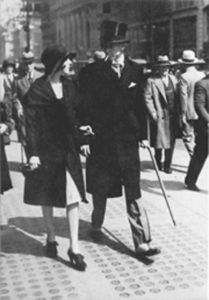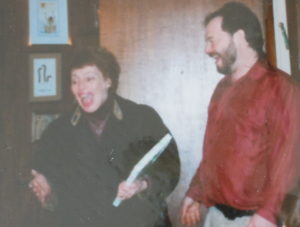Is Your Advertising or Marketing Working AGAINST You?
I received a fund appeal from a climate-change nonprofit asking for money to put this ad on the air. I was so appalled that I sent this letter:
[Subject] THIS AD WILL DO THE OPPOSITE OF WHAT WE WANT Re: Enough tiptoeing around it
[Body] No, and here’s why: This ad shows an astonishing ignorance of the deep triggers that change or reinforce behavior. You pit an audio track that is 100% climate-denier against visuals that fail to make a connection between the catastrophes shown and climate change.
For climate skeptics, this will not only not change their mind, it will REINFORCE the idea that climate change is a hoax. They will focus on the audio. Those of us who understand that climate change is real will focus on the visuals, and will be able to make the connection that climate change worsened the storms—but we’re not the ones who need to be convinced.
As a marketer with over 40 years experience who believes strongly in the ability of marketing to create social change, I think this ad will do more harm than good and should not be released.
Please don’t run it!
We’ve known about the difference between how the brain processes the obvious and the subliminal messaging in an ad for decades. I think I learned about this when I started reading a lot of marketing books, back in the 1980s. We’ve also known about “social proof” (the idea that because other people are doing something, you should too) going back to early-20th-century advertising geniuses like John Caples and Edward Bernays.

And we’ve known about the negative impact of negative images about the environment since at least the Cialdini study of 2003 (which showed that people are more likely to litter after watching an anti-littering video showing lots of people littering) and probably much earlier. So why would any marketer script an ad like this?
By contrast, consider how the super-successful anti-littering campaign “Don’t Mess With Texas” rallied people around state pride. Cleverly, the ad agency didn’t even announce it as a clean-up-the-state program at first. Aiming at the demographics that were most likely to litter, they handed out bumper stickers with just the slogan, then later introduced commercials that tied it to the real purpose: stopping littering. And Texan litter rates went way down!
We’ve also known for many years that cultural and language differences have a lot to do with any marketing piece’s success. I’ve written often about the way companies sometimes market the same product differently to different nations or subcultures, or how a company can even change up its whole product line for different markets. Here are two examples from very different industries (breakfast cereal and luxury cars) in an article I published five years ago on an Australian website.
Don’t make the mistake that Chevrolet made when it tried to market the Nova in Latin America. In Spanish, “no va” means “it doesn’t go.” Oh, and look at every possible way to break up a website or product name into separate words. Unintended consequences of a badly-chosen name are still consequences, as that link demonstrates extremely well.
Have you examined your own marketing to make sure the subliminal message, the obvious message, and the goal are all aligned? Do this right away—or contact me. I’d be happy to do it for you, at very reasonable prices. I’ve written eight books on marketing including several that won awards, were translated and republished overseas, and/or made some best-seller lists—note that I’m using social proof here ;-)—and have studied marketing for more than 30 years.


